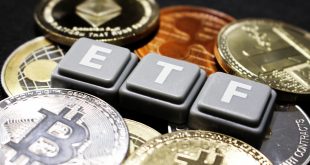Will nonfarm payrolls support Fed’s pause in June?
Nonfarm payrolls are an economic indicator that reflects the state of the labor market and the contribution to gross domestic product. They are also known as the jobs report or non-farms. In this context, nonfarm payrolls will be used as a test for the US dollar at 12:30 GMT on Friday. Investors expect employment growth to have eased to a more-than-a-year low of 180k in the month of April, while projecting a negligible pickup in the unemployment rate to 3.6% and a steady wage growth of 4.2% y/y.
If forecasts are correct, it would still show a tight labour market, but given the continued rate-cut pricing in futures markets, a major reduction in job growth might cause new harm to the US currency, particularly if the participation rate falls as well. Powell made an effort to persuade investors that rate cuts are not currently being considered, but his efforts were in vain. At the moment, investors are forecasting a 25 bps rate drop in June with a 13.5% likelihood, while also giving a minor probability of a similar rate cut at some time in Q4.
The Federal Reserve delivered its tenth consecutive rate hike on Wednesday, as expected, but reset its guidance to indicate increased emphasis on incoming data. Hence, Friday’s nonfarm payrolls will be the next test for the US dollar at 12:30 GMT, with forecasts pointing to a discouraging figure.
The Federal Open Market Committee (FOMC) decided to increase its funds rate by a quarter percentage point to the highest range in sixteen years of 5.0-5.25% for the sake of fighting inflation, despite three private banks collapsing recently.
Although Fed Chair Jerome Powell reiterated that the banking system remains sound and resilient, he acknowledged that downside risks in the sector have grown, and a more cautious approach might be needed.
The Fed is now more confident that a pause in monetary tightening could be around the corner but with inflation standing at 5.0% y/y – more than twice its symmetrical 2.0% target – it could not make any promises.
Alternatively, the US central bank seems to have chosen a safer path, adopting a less hawkish guidance to state that additional tightening could still be possible if there are signs of stronger-than-expected growth, inflation, and hiring.
Previously, policymakers were focused on signs of slowing inflation to ease the pace of tightening.
It is noteworthy that gold price is typically inversely connected with nonfarm payrolls. This indicates that the price of gold will be negatively impacted by higher-than-expected payroll numbers and vice versa.
Since Gold is priced in US dollars, along with the majority of other major commodities, higher NFP generally has a positive impact on the value of the USD. Therefore, if the USD appreciates, it will take fewer Dollars to purchase an ounce of gold.

 Noor Trends News, Technical Analysis, Educational Tools and Recommendations
Noor Trends News, Technical Analysis, Educational Tools and Recommendations




